Why Volos is Perfect in Autumn
The charming port city of Volos...
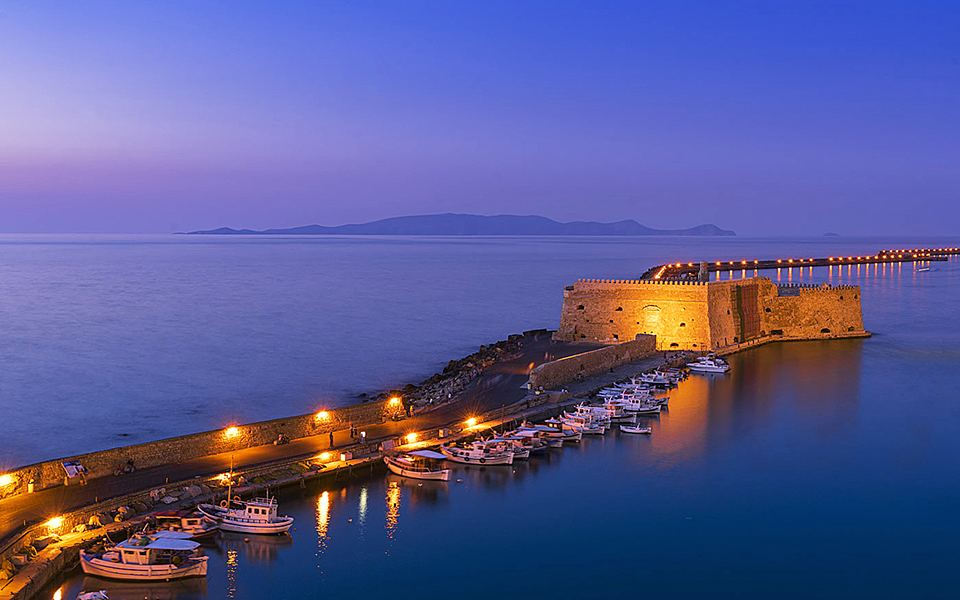
The Koules, a seaside 16th-century century fort, stands directly opposite the port and is an instantly recognizable icon of Irakleio.
© Perikles Merakos
A question posed on a blackboard at the corner of Milatou and Aghiou Titou streets asks: “What do I love about Irakleio?” The responses to this impression-gathering initiative, organized by the Ideopolis cultural center, reflect the city’s identity. Reactions include comments like “the people and the food,” “the genuine smiles,” “the raki” (distilled spirit), “the pentozali” (traditional Cretan dance), “the [fortification] walls” and “sunset at the Koule fortress”.
Irakleio is a city to be fully lived while its hospitality remains unforgettable. Locals have a strong tendency to persuade visitors into joining in on celebrations and holiday experiences that will live on as lifelong memories. Indulging in local culinary customs, including eating snails, drinking considerable amounts of raki without after effects, becoming acquainted with the monumental Venetian gates, and reveling in late-night celebrations, whether to the sound of rock music or traditional local tunes, are just some examples of the pleasures visitors can enjoy alongside open-hearted Cretans. Age-old cafes, stylish bars, the steps at the 16th-century Loggia, a magnificent arcaded Venetian building, the pleasant greenery at the city’s Georgiadis Park, as well as the views from atop of bastions or hotel rooftops, are all part of the Irakleio experience. Locals can certainly help visitors discover the discreet beauties of this Cretan city, often criticized for a lack of charm.
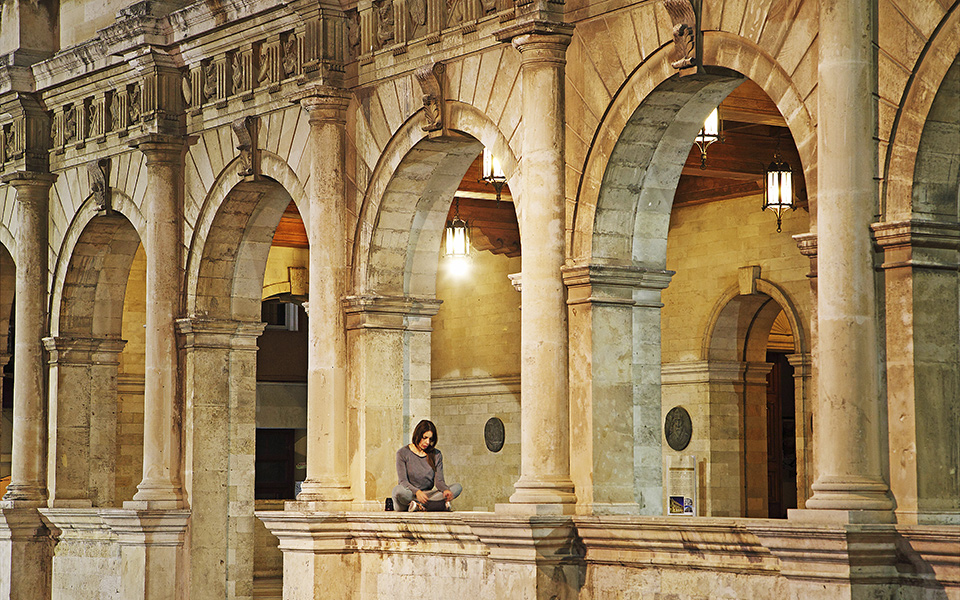
Loggia once served as a clubhouse for the city's nobility
© Olga Harami
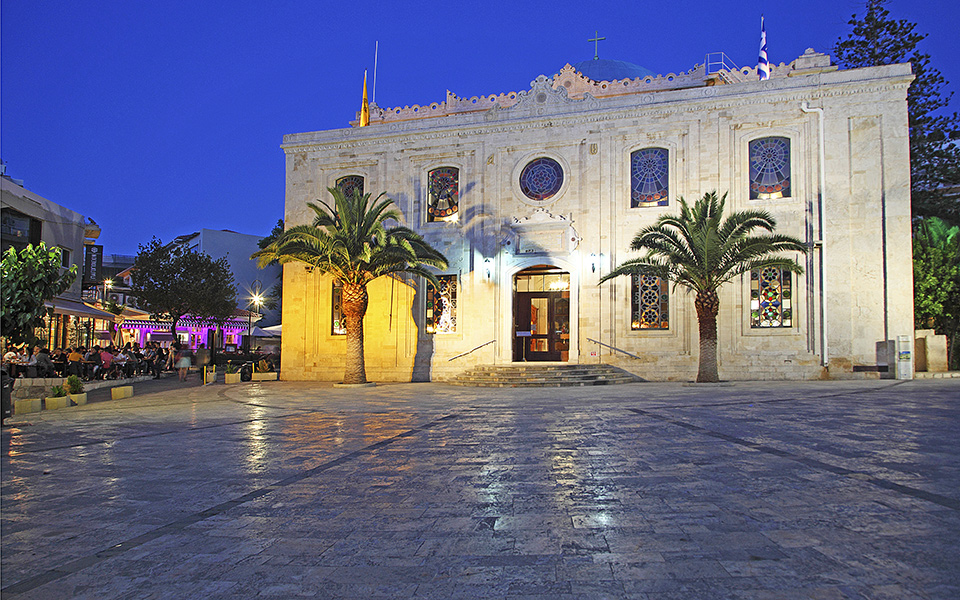
Aghios Titos Church, on the square of the same name
© Olga Harami
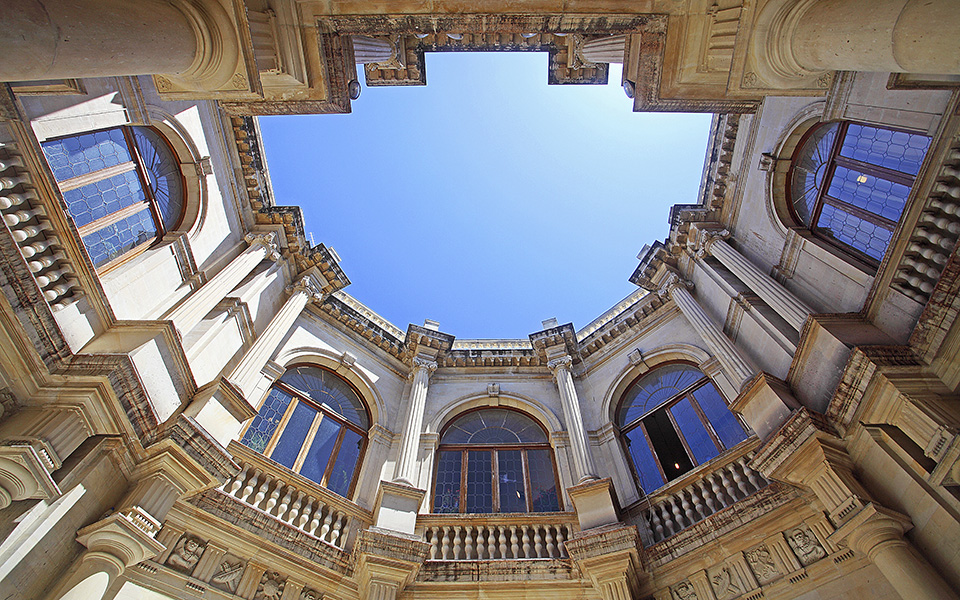
Irakleio City Hall is housed in the Venetian Loggia
© Olga Harami
Irakleio was settled during the Minoan era, its port serving Knossos and, much later, as a base for Saracen pirates. Irakleio shone while ruled by the Venetians, who adorned the city with forts, stunning buildings and seven kilometers of fortifications, making it one of the Mediterranean’s best fortified cities. Nowadays, Irakleio is Crete’s capital city, with a population of 180,000 as well as roughly 15,000 students. The University of Crete is regarded as Greece’s finest, according to the Times Higher Education ranking. The city’s Foundation for Technology and Research is considered to be the country’s leading research center.
The city’s museums, a matter of greater interest to visitors, are superb. The Archaeological Museum at Eleftherias Square is one of Greece’s most significant on the strength of its Minoan artifacts on display. The Natural History Museum of Crete, by the seafront, the Museum of Christian Art maintained inside Aghia Ekaterini church, and Cretquarium, a large and modern sea aquarium located in Gournes, 15 km from the city, all add up to an enticing list of attractions, which also must include Irakleio’s monuments – churches, gates, fountains, fortifications and bastions.
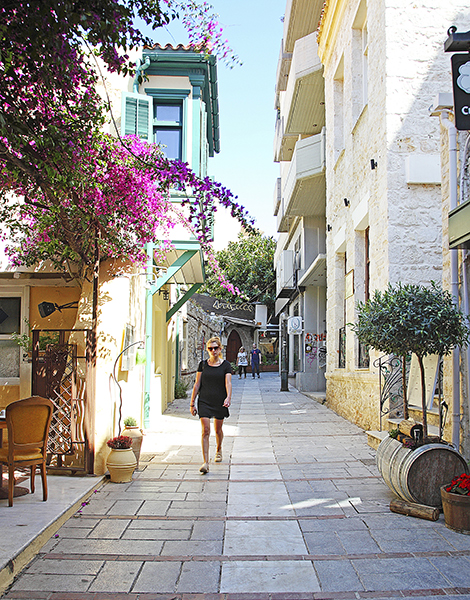
There are several walking routes in the city which enable you to take in the city and its landmarks
© Olga Harami
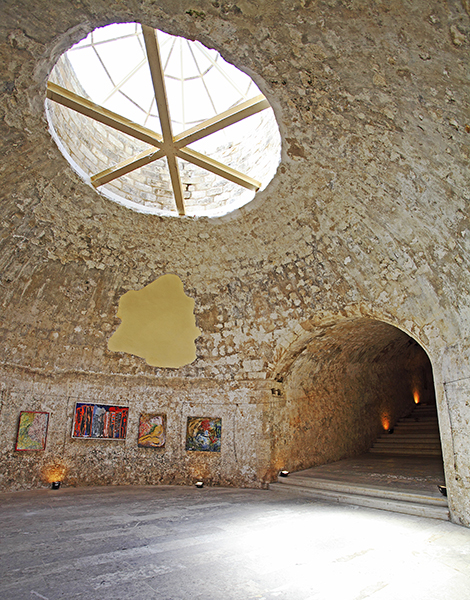
Aghios Georgios Gate, a space which often hosts exhibitions
© Olga Harami
One of three worthwhile walking routes in Irakleio begins at the city’s Pankritio Stadium, built to host soccer games during the 2004 Athens Olympics, and reaches the old port, which features an impressive, sheltered 14th-century century boatyard developed by the Venetians. Even more impressive, the Koules, a seaside 16th-century century fort, stands directly opposite the port, as does a 2.4-km seawall.
A second recommended route, more striking perhaps, covers the length of the fortifications, both on and alongside them, running parallel to Plastiras Avenue.
Reinforced over a period of more than a century by the Venetians, it took the Ottomans about 21 years to destroy the walls surrounding the old town. A continuous path by the walls runs for 4 km. Art exhibitions and other worthwhile events are staged at the restored St George’s Gate (Pyli Aghiou Georgiou). On permanent display at the New Gate (Kenourgia Porta) is an exhibition dedicated to Cretan writer and philosopher Nikos Kazantzakis. Concerts are staged at Bethlehem Gate while Hania Gate (Hanioporta) remains closed to the public.
Look out for the bastions along the wall’s route – Samponiara, Vitturi, Jesus, Martinengo (Kazantzakis’s tomb is located here), Bethlehem, Pantokrator and St Andrew. Veering southeast leads to the wonderful Georgiadis Park, a lush area that is popular with the local alternative types. Heading north leads to old Irakleio neighborhoods comprising low-level houses and narrow alleys, including Lakkos, currently experiencing a revival as a result of efforts made by the area’s residents and the Lakkos project, a voluntary group.
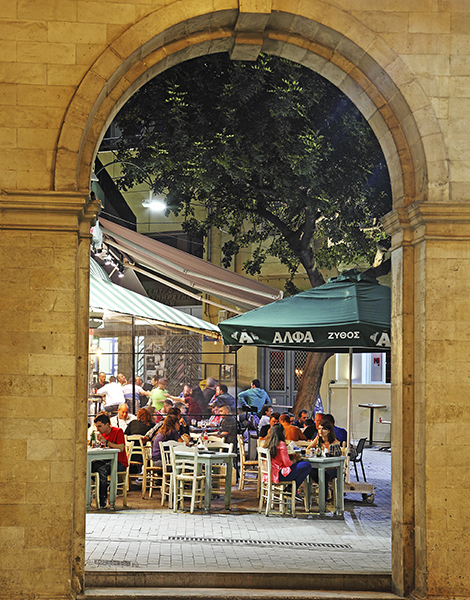
The city's historic center is home to many places to eat, drink and socialize
© Olga Harami
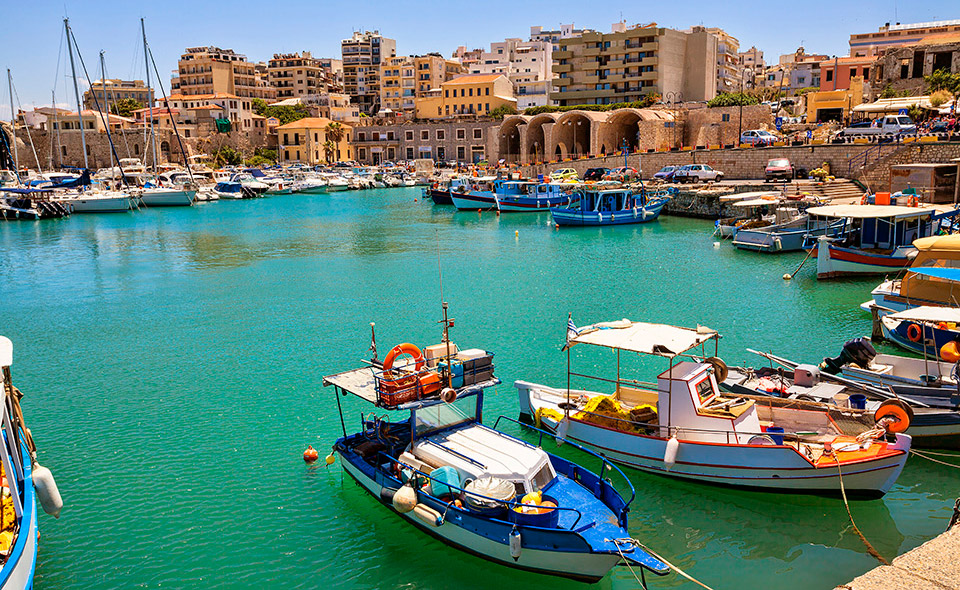
The Venetian port is a good place to enjoy a run
© Shutterstock
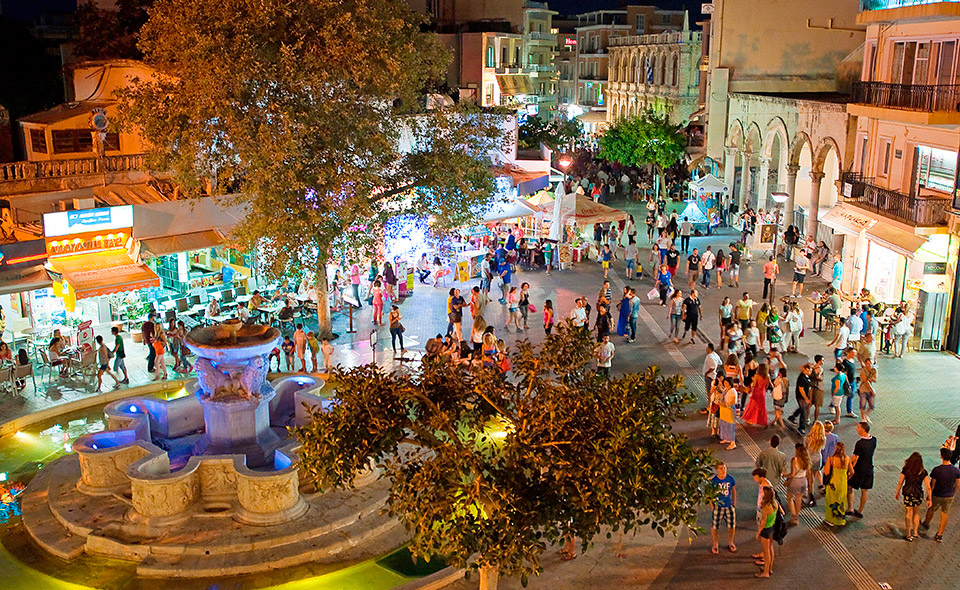
The bustling Lion's Square, officially known as Eleftheriou Venizelou Square
© Shutterstock
The third route covers the city’s historic center. Head uphill along car-free Eikostis Pemptis Avgoustou Street from the Venetian port. St Titus’ Cathedral, the Basilica of St Mark, which nowadays hosts cultural events, and the Loggia, the city’s most impressive building that once served as a clubhouse for the nobility and now houses the town hall, are all located along this road. From here, head to Liontaria – as Eleftheriou Venizelou Square is most commonly known – featuring a water fountain erected by the doge of Venice Francesco Morosini, and also explore the network of pedestrianized roads surrounding the square, including Handakos, Korai and Perdikari streets. Numerous bars, rakadika (raki and meze spots), cafes and various events, including dance nights and celebrations, often impromptu, make this part of the city extremely lively.
Continue to the old market (palia agora), located on a pedestrianized boulevard named 1866 Street after a Cretan revolt against Ottoman rule, where tourist souvenir shops and meze places nowadays prevail. The overall atmosphere has remained quite special in this area. It leads to Kornarou Square, featuring the lovely Venetian Bembo Fountain and the 18th-century Haji Ibrahim Aga Ottoman sebil, a public fountain.
For authentic Irakleio experiences, purchase Greek coffee at the Dandalis store and yoghurt at Amalthia, both on 1866 Street, cheese products from Kargakis on Tsikritzi Street and bougatsa pastry, filled with either semolina custard or cheese, at Kirkor, on Liondaria Square. For a midday custom dating back to 1924, sit at the old market’s Sarantavga café for raki and snails.
The charming port city of Volos...
Patmos Aktis, Resort & Spa combines...
A once-mighty city-state overlooking Souda Bay,...
Experience Crete’s slow food philosophy where...